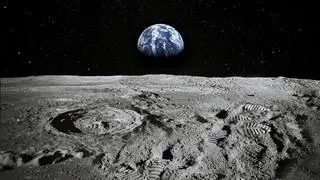Scientists have developed the first on-line system for predicting and forecasting the radiation environment in near-Earth, lunar and Martian space.
Astrophysicists from the University of New Hampshire’s Space Science Centre (SSC) created the new near real-time tool that will provide critical information as preparations are made for potential future manned missions to the Moon and Mars.
“If we send human beings back to the Moon, and especially if we’re able to go to Mars, it will be critical to have a system like this in place to protect astronauts from radiation hazards,” said researcher Nathan Schwadron.
Known as PREDICCS, the web-based tool for the first time integrates numerical models of space radiation, a host of real-time measurements being made by satellites currently in space, and “propagation codes” that can accurately project radiation levels out as far as Mars.
The tool was made possible through NASA’s Living With A Star (LWS) Targeted Research and Technology programme.
The website provides updates of the radiation environment on an hourly basis and archives the data weekly, monthly, and yearly.
This historical record provides a clear picture of when a safe radiation dose limit is reached for skin or blood-forming organs, for example.
“What we really need to know is how hazardous this cycle of radiation is. How often do we see large events that have significant risk associated with them? Those questions can only be answered if you’re continually building up the database of events and the risk associated with them,” said Nathan Schwadron in a statement.
He notes further that the space science community has traditionally viewed radiation hazards in space as a “showstopper” and that until PREDICCS there has never been an extremely accurate, nearly real-time means of challenging that.








Comments
Comments have to be in English, and in full sentences. They cannot be abusive or personal. Please abide by our community guidelines for posting your comments.
We have migrated to a new commenting platform. If you are already a registered user of TheHindu Businessline and logged in, you may continue to engage with our articles. If you do not have an account please register and login to post comments. Users can access their older comments by logging into their accounts on Vuukle.